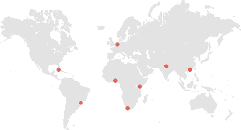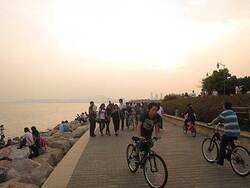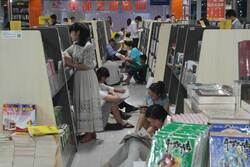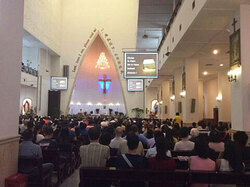Under the guidance of professor Arnold Reijndorp and Chingwen Yang, 3 master students Urban and Regional Planning and 1 master student Human Geography of the University of Amsterdam will focus on bicycling, the emergence of third places, the social capital of church visitors and the use of planning consultation and design contests, in Guangming New Town and Da Lang Neighborhood in particular.
Students:
– Sjoerd Segijn
– Ruben Cales
– Luc Keller
– Daan Goedkoop
Tutors:
– Chingwen Yang
PhD candidate in Urban Planning, Department of Human Geography, Planning and International Development Studies, University of Amsterdam
– Arnold Reijndorp
Professor of Socio-Economic and Spatial Development of new urban areas at the Centre for Urban Studies, University of Amsterdam; Han Lammers Chair, UvA
Sjoerd Segijn
The emergence and role of third places in Dalang Neighborhood, Shenzhen
Places where people regularly come besides their work have proven to play an important functional, social and emotional meaning in Western people’s lives. However, not much is known about the Chinese situation. This research will try to make clear what these so-called third places look like and how they emerge in a highly transitioning neighborhood in Shenzhen: Dalang. In this area, about 90% of the people consist of low-educated migrant workers, although eager to develop themselves personally. What role can third places play in the social and cultural development of these people? And how might we foster the emergence of these places through planning?
Ruben Cales
Planning consultancies and their role in Shenzhen Low Carbon City
Shenzhen wants to reduce its carbon emission drastically and establish itself as a world leading eco-city. Planning consultancies play an important role in the planning process, either through organized competitions or through collaborations, to reach this goal. This research focuses on the organization of the planning process in regard to consultation and if this contributes to the implementation of the Low Carbon City. Special attention is being paid to the prominent megaprojects of Guangming New Town, Qianhai Bay and Pingdi International Low Carbon City.
Luc Keller
The Catholic Church in Shenzhen: Meeting Point for Migrants
Shenzhen has become a metropolis with almost 15 million inhabitants of which 82% are migrants. This research is about the emergence of Catholic churches in China. In Shenzhen, the churches have become a meeting place for migrants. The biggest church in Shenzhen is called St Anthony’s Catholic church and has an English speaking and a Chinese speaking community. The first one seems to play an important role in building up social networks, while the last one tends to have a bonding function.
Daan Goedkoop
Attitudes Regarding Commuting by Bicycle in Shenzhen
Bicycling is one of the most environmental friendly ways of transportation. But how can its use be promoted? Answering this question requires insight in the motives for people to choose a particular mode of transportation. Previous research has suggested that, in addition to the physical infrastructure and city layout, ‘soft aspects’ such as attitudes and social norms play a large role. However, not much is known about soft aspects and bicycling outside of a Western context. My research tries to fill in this gap a little bit, by investigating how white-collar employees in Shenzhen think about bicycling. The resulting knowledge might also be useful for the development of Guangming New Town.






